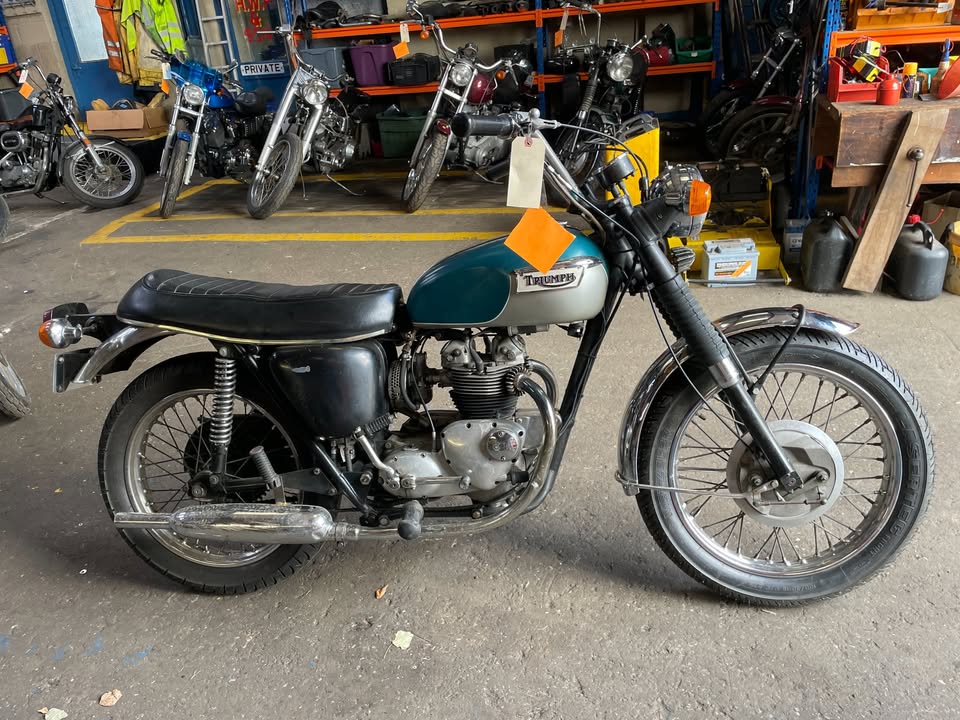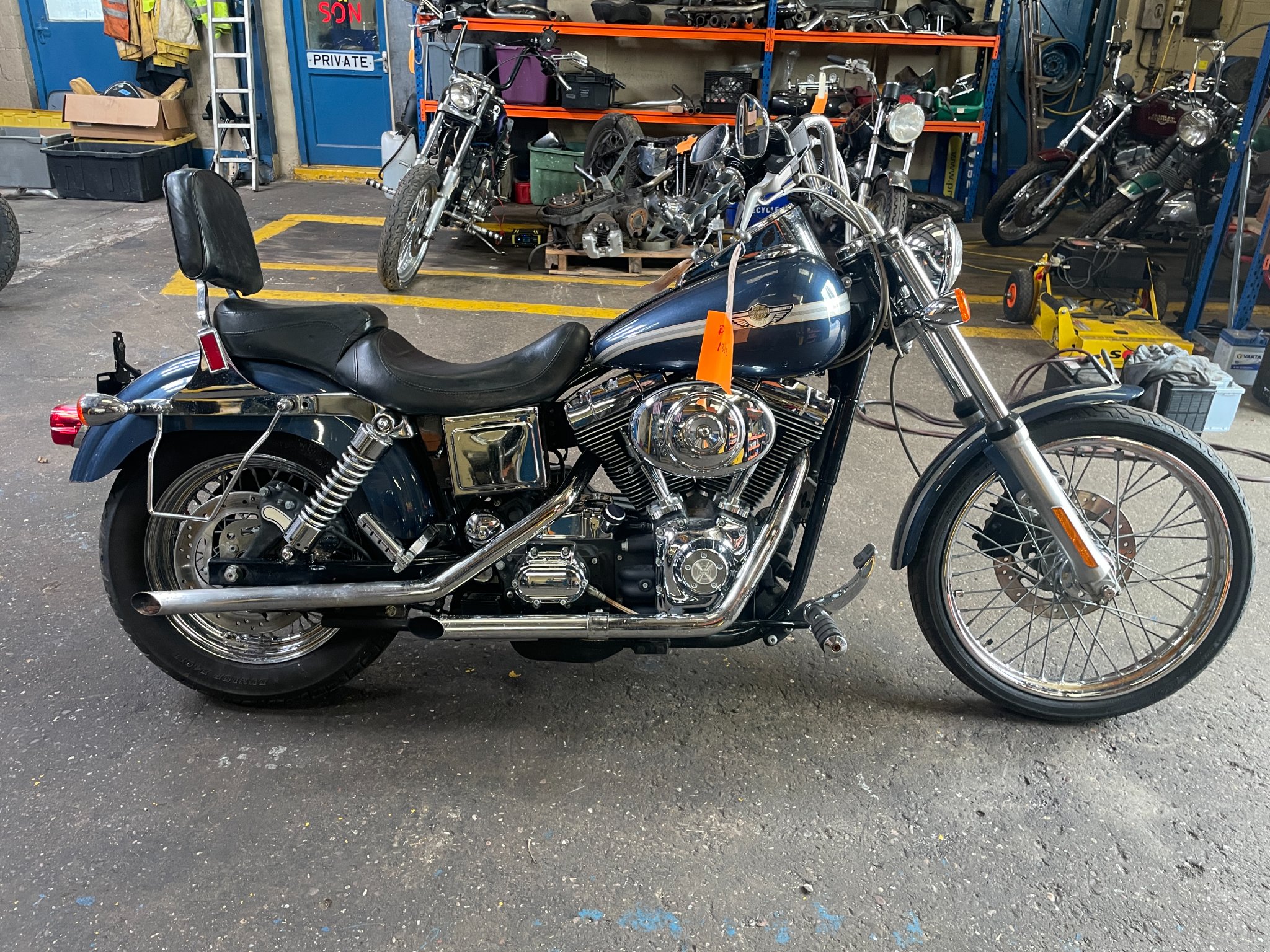 1971-Triumph-500cc-T100c-Tiger-Ref-1561
1971-Triumph-500cc-T100c-Tiger-Ref-1561 2003-Harley-Davidson-Anniversary-Dyna-Wide-Glide-FXDWG-1450cc-Ref-D1322
2003-Harley-Davidson-Anniversary-Dyna-Wide-Glide-FXDWG-1450cc-Ref-D1322Date: August 2025
The BSA Spitfire 650 was introduced in 1966 as a high-performance unit twin, inheriting the BSA Lightning frame but with higher compression pistons, twin Amal GP carburettors, alloy rims, and improved brakes. The Mark II launched in 1966, succeeded by the Mk III (with Amal Concentrics for better starting) and the rare Mk IV in 1968 with twin-leading-shoe brakes and improved ignition. It was the fastest standard BSA of its era.
| Condition | Estimated Value (GBP) | Example External Source (non-link reference) |
|---|---|---|
| Project / Restoration Non-running or incomplete; mechanical or cosmetic recommissioning required. |
£2,800 – £4,000 | Mecum Historic data – 1966 BSA Spitfire non-runner bid ~$3,700 (~£3,000) |
| Roadworthy / Presentable Running, tidy; may show minor wear or period wear but mechanically sound. |
£5,500 – £7,000 | Iconic Auctioneers – 1966 Mk II sold £6,187 |
| Restored / Excellent Very original or restored; alloy wheels, GP reeds or Concentrics, polished trim. |
£7,500 – £10,000 | Hagerty valuation for Mk IV in excellent condition ~$7,900 (~£6,500) |
In the UK, presentable Mk II–IV BSA Spitfires usually reach £5.5k–£7k, with very clean or restored examples realizing £7.5k–£10k. Project bikes fall into the £2.8k–£4k range. Condition, matching parts, and documentation are key to achieving stronger results.
Source attribution (non-link references): Iconic Auctioneers – 1966 Mk II sold £6,187; Hagerty valuation – Mk IV excellent ~$7,900; Mecum Historic – non-runner bid ~$3,700.
One email notification a month when a new shipment arrives.
 1971-Triumph-500cc-T100c-Tiger-Ref-1561
1971-Triumph-500cc-T100c-Tiger-Ref-1561 2003-Harley-Davidson-Anniversary-Dyna-Wide-Glide-FXDWG-1450cc-Ref-D1322
2003-Harley-Davidson-Anniversary-Dyna-Wide-Glide-FXDWG-1450cc-Ref-D1322